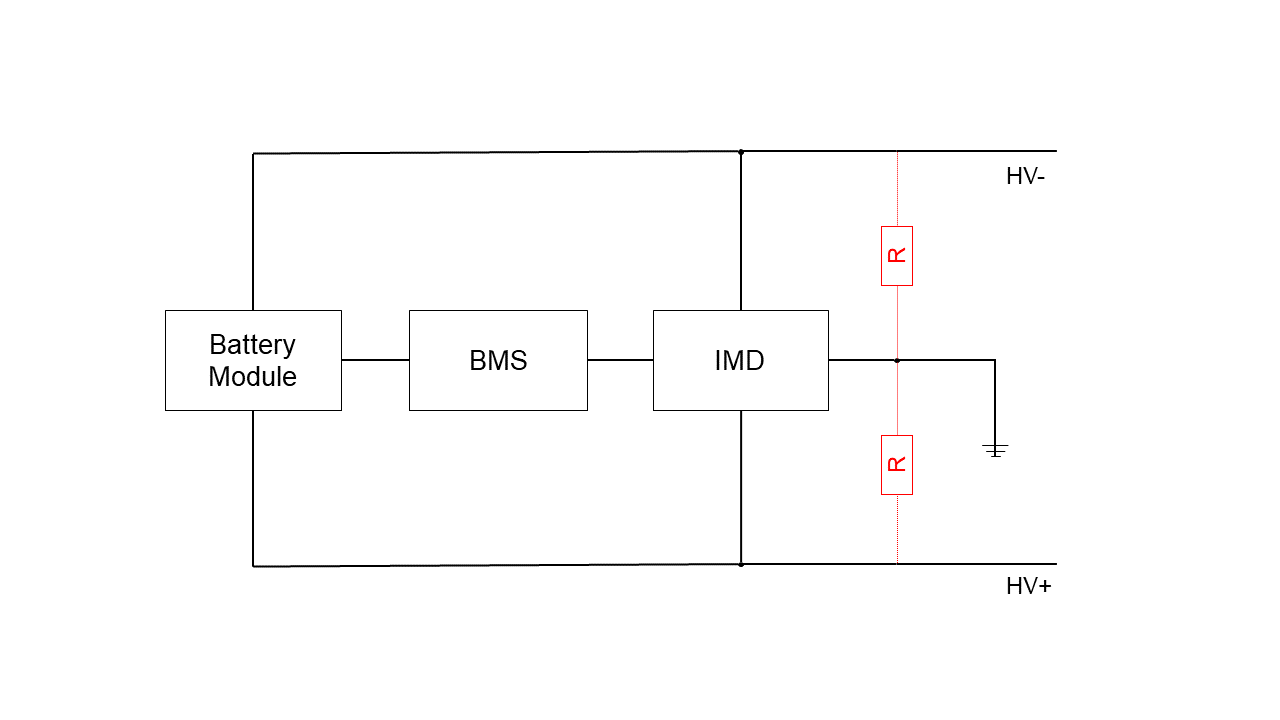4. IMD Testing
The Insulation Measurement Device measures the insulation resistance between the high voltage potentials. Low insulation resistance induces a high safety risk, to sense this danger the IMD is used. To ensure the correct functionality testing the IMD on the actually implemented system is very important.

Fig. 4.20 Resistance measured by the IMD (in red)
4.1. Test preparation
Needed to test the IMD are:
foxBMS 2 workspace as described in Getting Started with foxBMS 2
resistors with different values are required
Rmax * |
Rwarning |
Vcritical |
|---|---|---|
50\({M\Omega}\) |
750\({k\Omega}\) |
500\({k\Omega}\) |
* maximum resistance measurable by the supported IMD devices (see Insulation Measurement Device).
4.2. Testing resistance
First data_blockInsulationMonitoring and data_blockErrors is added to
the watch window of the debugger to observe the output of the IMD.
To test if resistance is read correctly put a resistor between the high voltage connectors and the ground/chassis potential.
After a slight delay it reports the resistance of the resistor which can be read in the insulation monitoring data table.
If the resistance is lower than the warning threshold of 750\({k\Omega}\) the
warnableLowInsulationResistanceError will be set.
If the resistance is lower than the critical threshold of 500\({k\Omega}\) the
criticalLowInsulationResistanceError will be set.
